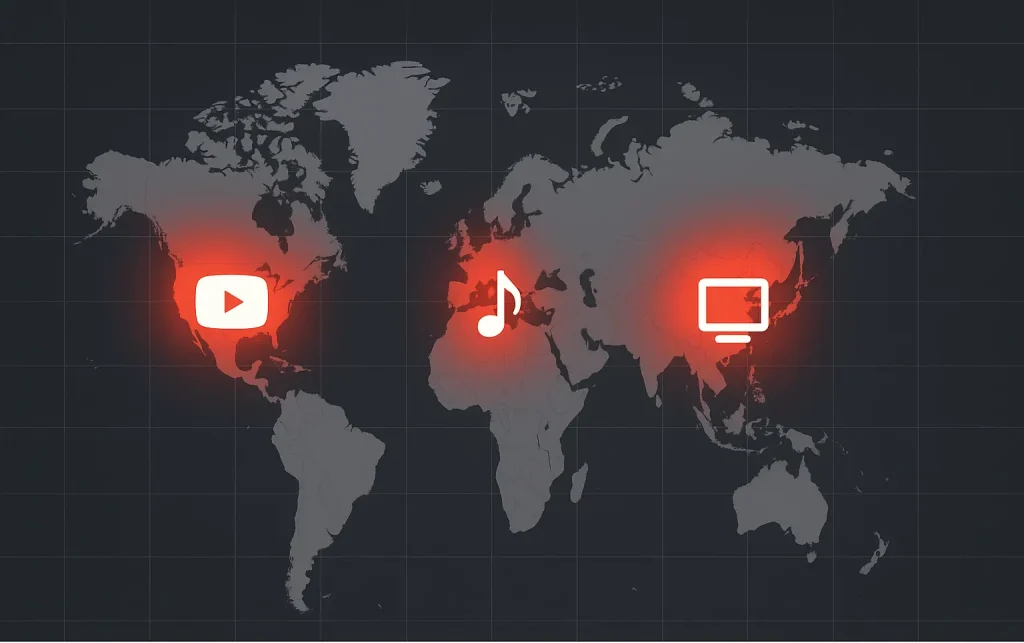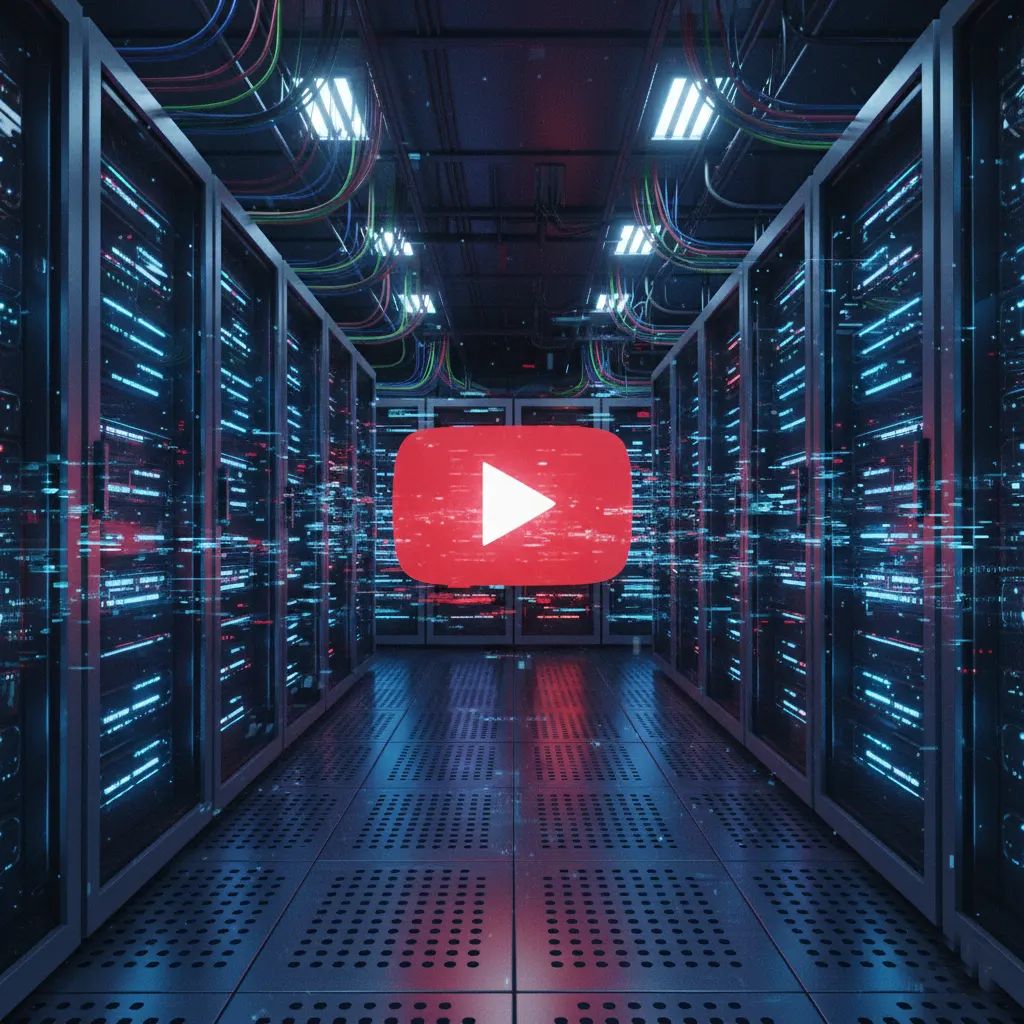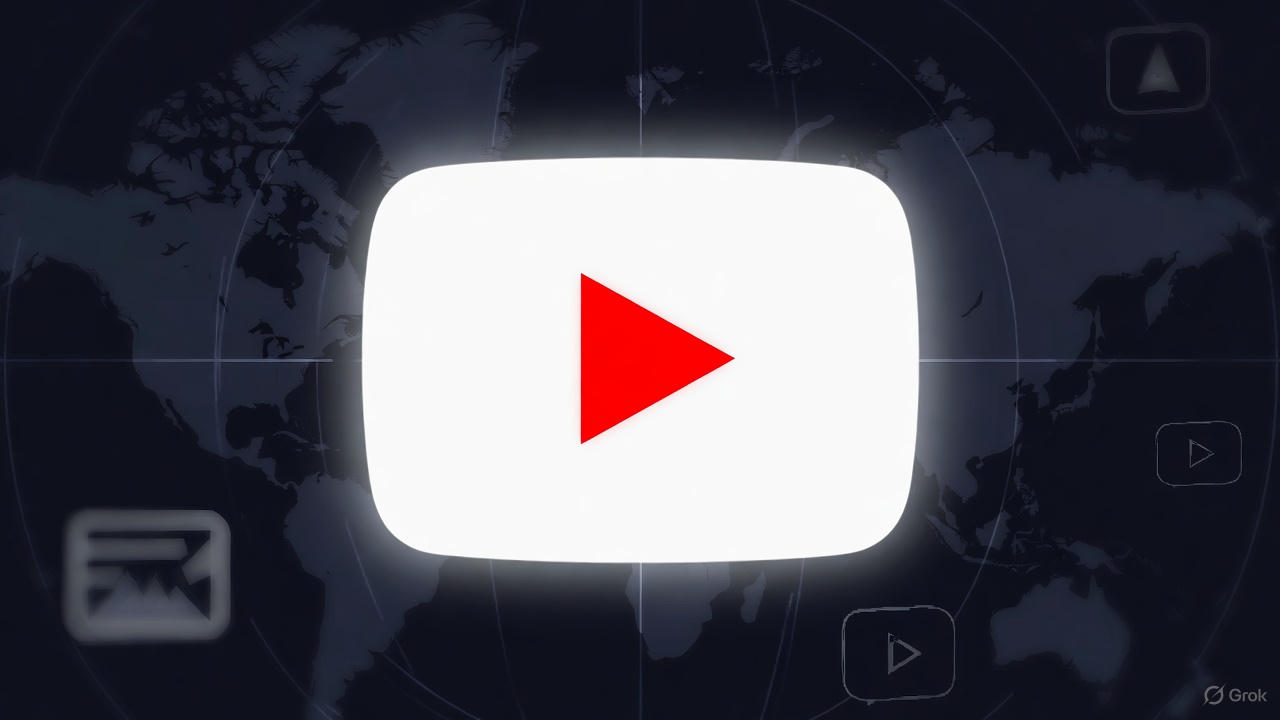Introduction: A Rare Global Disruption
On October 15, 2025, millions of users worldwide experienced a sudden YouTube outage that made videos impossible to play for over an hour. The glitch also affected YouTube Music and YouTube TV, halting global streaming and triggering widespread social media buzz.
According to Reuters, more than 366,000 users in the U.S. alone reported playback issues during the peak of the incident.
Although temporary, this was one of YouTube’s most extensive service disruptions in years — raising questions about what went wrong and how such a robust platform could fail so suddenly.
Timeline of the Outage
- Initial Reports Flood In
Early in the evening (around 7:45 p.m. ET), thousands of users began posting on X (formerly Twitter) about their inability to stream videos. Platforms like Downdetector saw reports spike dramatically within minutes. - Global Impact Confirmed
Outages spread from North America to Europe, Asia, and Australia. The Verge and CNN confirmed the disruption through user analytics and Google’s public acknowledgment. - YouTube Responds
By 8:10 p.m., YouTube Support tweeted: “We’re aware some of you are experiencing issues with YouTube, YouTube Music, or YouTube TV. We’re investigating now.” - Service Restored
Roughly an hour later, YouTube announced that the issue had been resolved and that video playback was functioning normally again. (Times of India)
Symptoms & User Reports
During the outage, users reported several key issues:
- Video playback errors (“An error occurred. Please try again later.”)
- Blank screens or spinning loaders on mobile and desktop apps
- Login failures and “Network error” messages on YouTube Music
- Smart TV streaming interruptions (especially on Roku and Fire TV devices)
- Failed uploads and missing playlists
According to Cord Cutters News, millions of frustrated users flooded social media platforms to confirm the glitch wasn’t isolated.

Geographic Spread & Scale
Reports indicate the outage was global, affecting multiple regions simultaneously.
- United States – Over 366,000 complaints were logged on Downdetector.
- UK & Europe – Reports surged around 1:00 a.m. local time.
- Asia-Pacific & Australia – Significant disruptions to YouTube TV streaming services.
A live outage map from Downdetector.com visually confirmed hotspots across New York, London, Sydney, and Mumbai.
YouTube’s Response & Communication
YouTube’s handling of the crisis was notably quick and professional. Within an hour of confirmation, the platform:
- Posted a transparent update on X (Twitter) acknowledging user reports
- Coordinated with Google’s network operations team to isolate the issue
- Provided real-time updates on Google’s Workspace Status Dashboard
- Published a follow-up confirming the issue was fully resolved
While YouTube did not share the specific cause, its rapid communication helped calm users and limit misinformation.
Possible Technical Causes
While YouTube hasn’t released a root-cause report, experts in cloud infrastructure suggest possible culprits, including:
- Content Delivery Network (CDN) malfunction – CDNs deliver cached video content; a global routing error can disrupt playback instantly.
- Server-side configuration failure – A misconfigured deployment can propagate systemwide due to YouTube’s distributed architecture.
- Routing or DNS mismanagement – Similar to previous Google outages in 2020. (Google Cloud Blog)
- Authentication service failure – Token verification issues could have temporarily locked users out.
- Cache synchronization glitch – Inconsistent cache states often result in video load failures.
These types of cascading issues are common in hyperscale cloud environments like YouTube’s.

Why the Official Cause Wasn’t Revealed
Google (YouTube’s parent company) often withholds detailed technical causes for several reasons:
- Cybersecurity protection: Revealing vulnerabilities could invite exploitation.
- Legal and PR strategy: Avoiding speculation that could affect Alphabet’s stock value.
- Incomplete diagnostics: Root-cause analysis takes days or weeks.
- Regulatory concerns: Compliance with data privacy or infrastructure laws.
Similar discretion was observed during the Google Cloud outage in 2020 and YouTube’s 2018 global crash.
How YouTube Fixed It
Based on industry-standard recovery processes, YouTube’s fix likely involved:
- Rolling back recent server updates
- Rerouting network traffic through unaffected data centers
- Restarting critical services on Google’s backend infrastructure
- Purging corrupted cache data to restore normal playback
- Load balancing across global edge nodes to prevent repeat failures
Once internal systems stabilized, the streaming platform verified performance using YouTube Analytics and external trackers before confirming restoration.
Lessons About Distributed Systems
This outage highlighted key lessons in software engineering:
- Redundancy is never absolute — even global platforms can fail.
- Monitoring must go beyond uptime — performance, latency, and interdependencies matter.
- Failover systems should automatically detect and reroute affected services.
- User transparency builds trust and limits backlash.
As Cloudflare notes, distributed systems require continuous resilience testing to handle unexpected faults.
Impact on Content Creators and Businesses
The outage had measurable effects on creators and brands:
- Livestreams interrupted, costing streamers real-time donations.
- Advertisers lost ad impressions during peak U.S. hours.
- Educational channels experienced class disruptions worldwide.
- Brand reputation dips—though minor—were seen among power users.
YouTube’s fast recovery helped minimize long-term revenue loss, but it underscored the fragility of creator-dependent ecosystems.
What Users Can Do During Platform Failures
If YouTube (or any major service) goes down again, here’s what users can do:
- Check Downdetector for live outage maps.
- Visit Google’s App Status Page.
- Restart your app or clear cache — minor fixes often resolve local issues.
- Switch networks (Wi-Fi to mobile or vice versa).
- Use alternative platforms like Vimeo or Twitch.
- Stay informed via official YouTube Support updates.

Comparing Past YouTube Outages
| Year | Duration | Main Cause (Reported) | Impact |
|---|---|---|---|
| 2018 | ~90 minutes | Server issue | Global video access failure |
| 2020 | ~45 minutes | Authentication bug | Multi-Google service disruption |
| 2025 | ~60 minutes | Undisclosed | Multi-service streaming failure |
How Platforms Strengthen Resilience Post-Outage
After such incidents, major tech companies typically:
- Conduct full root-cause analysis (RCA)
- Publish post-mortem reports internally
- Deploy canary testing systems before global rollouts
- Implement automatic rollback mechanisms
- Run chaos engineering tests (as pioneered by Netflix’s Chaos Monkey)
These measures help ensure future disruptions are shorter and less widespread.
Broader Implications for the Internet
This YouTube glitch reminds us that modern life is deeply intertwined with a handful of cloud systems. When a single service goes down:
- Communication, entertainment, and education all halt temporarily.
- Millions of small businesses lose visibility.
- Global productivity drops, even for a short period.
It’s a wake-up call for digital resilience — encouraging more distributed architectures and open-source decentralization.
Key Takeaways
- The October 2025 YouTube outage was one of the largest in years, affecting millions globally.
- The issue likely stemmed from infrastructure or CDN misconfigurations, resolved within about an hour.
- YouTube’s swift transparency on Twitter helped limit speculation.
- The event shows that no service, however massive, is immune to disruption.
- For creators and users, maintaining alternative platforms and data backups is smart risk management.
As the world grows ever more digital, such outages remind us that resilience, not perfection, defines modern technology.
Frequently Asked Questions (FAQs)
Q1. What caused the YouTube outage on October 15, 2025?
A1. The official cause wasn’t disclosed, but experts suggest a CDN or server configuration issue was to blame. (Reuters)
Q2. How long was YouTube down?
A2. Roughly one hour, based on data from Downdetector.
Q3. Were YouTube Music and TV affected?
A3. Yes, both services were disrupted as part of YouTube’s shared infrastructure. (CNN)
Q4. Did the outage affect creators’ revenue?
A4. Briefly, yes — monetized videos lost ad impressions during the downtime.
Q5. How did YouTube resolve the problem?
A5. Likely through rapid rollback, service restarts, and cache clearing, consistent with Google Cloud incident protocols.
Q6. Could this happen again?
A6. It’s possible. Even advanced systems need constant resilience updates, as shown in past outages from YouTube and other tech giants.
#YouTubeOutage #YouTubeDown #YouTubeGlitch #StreamingError #TechNews #GoogleCloud #OutageAlert #DigitalResilience #YouTubeUpdate #CyberNews


